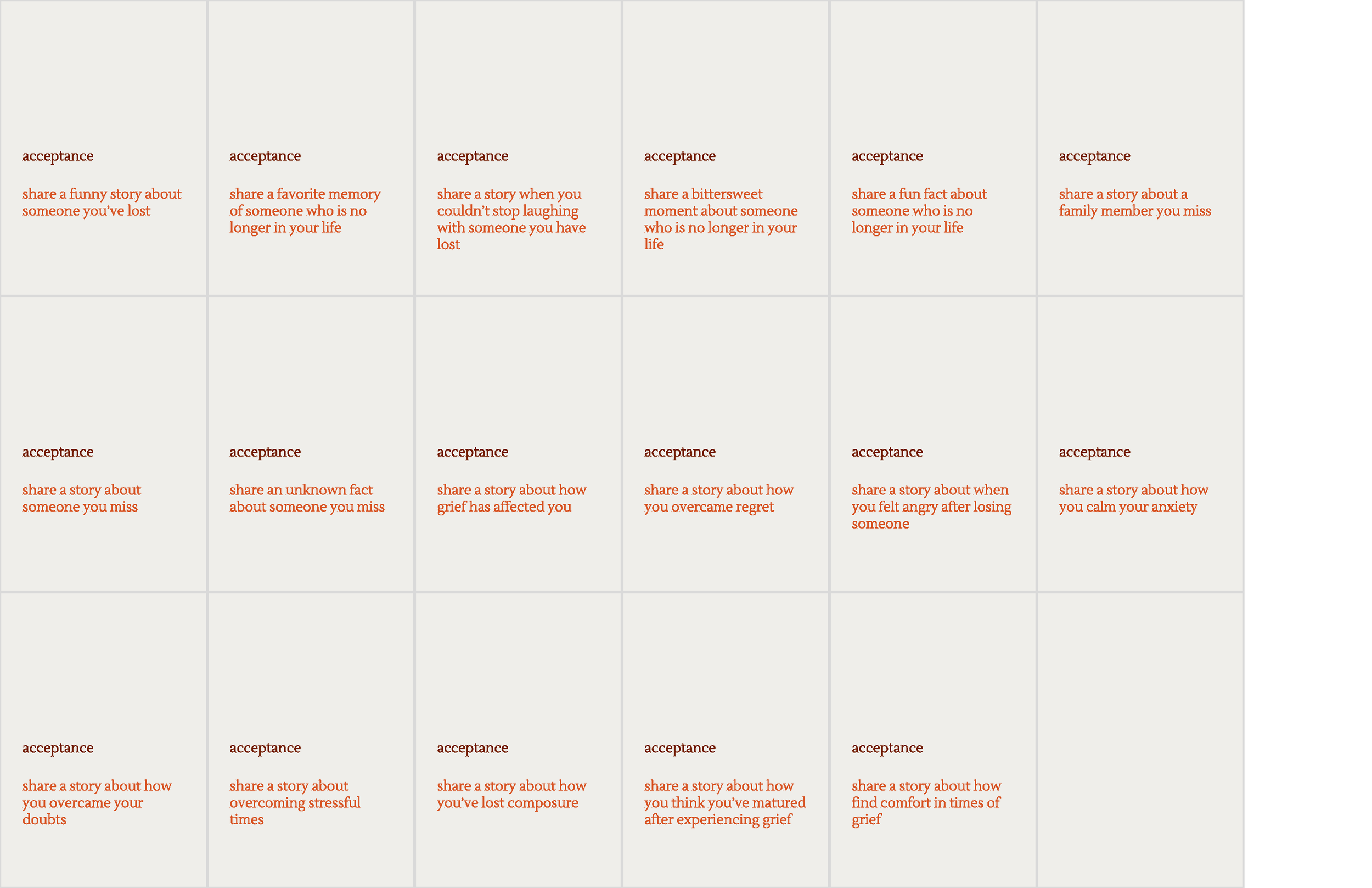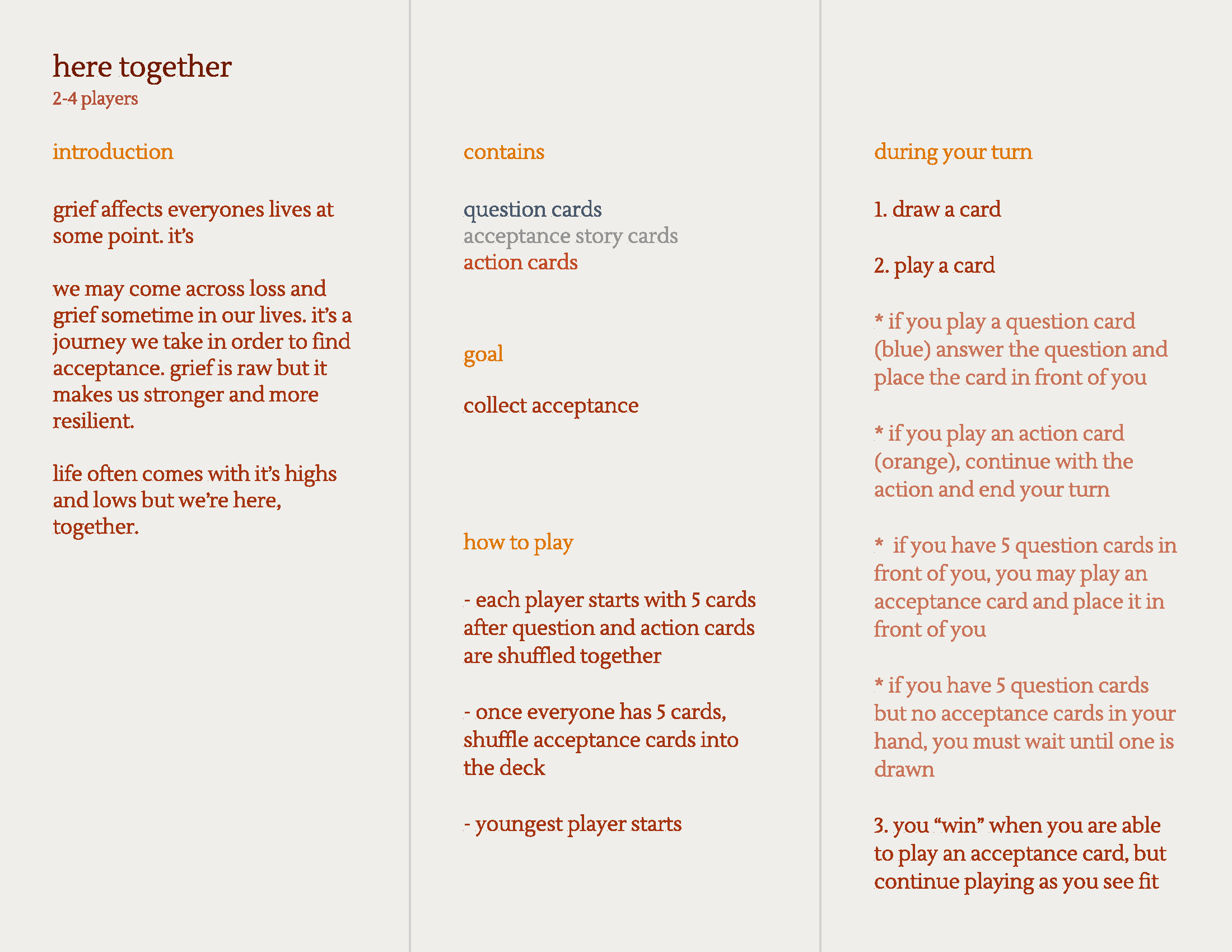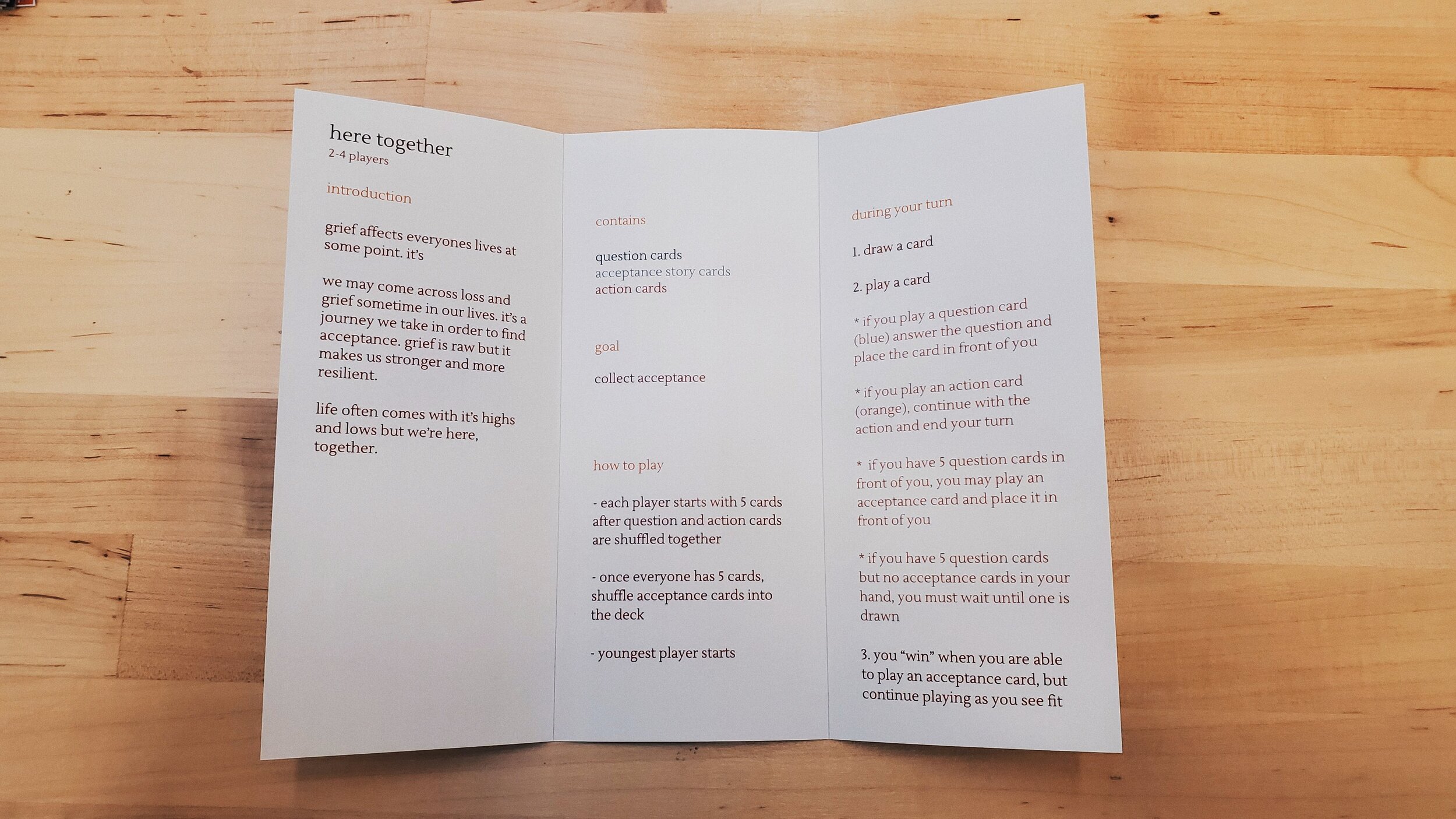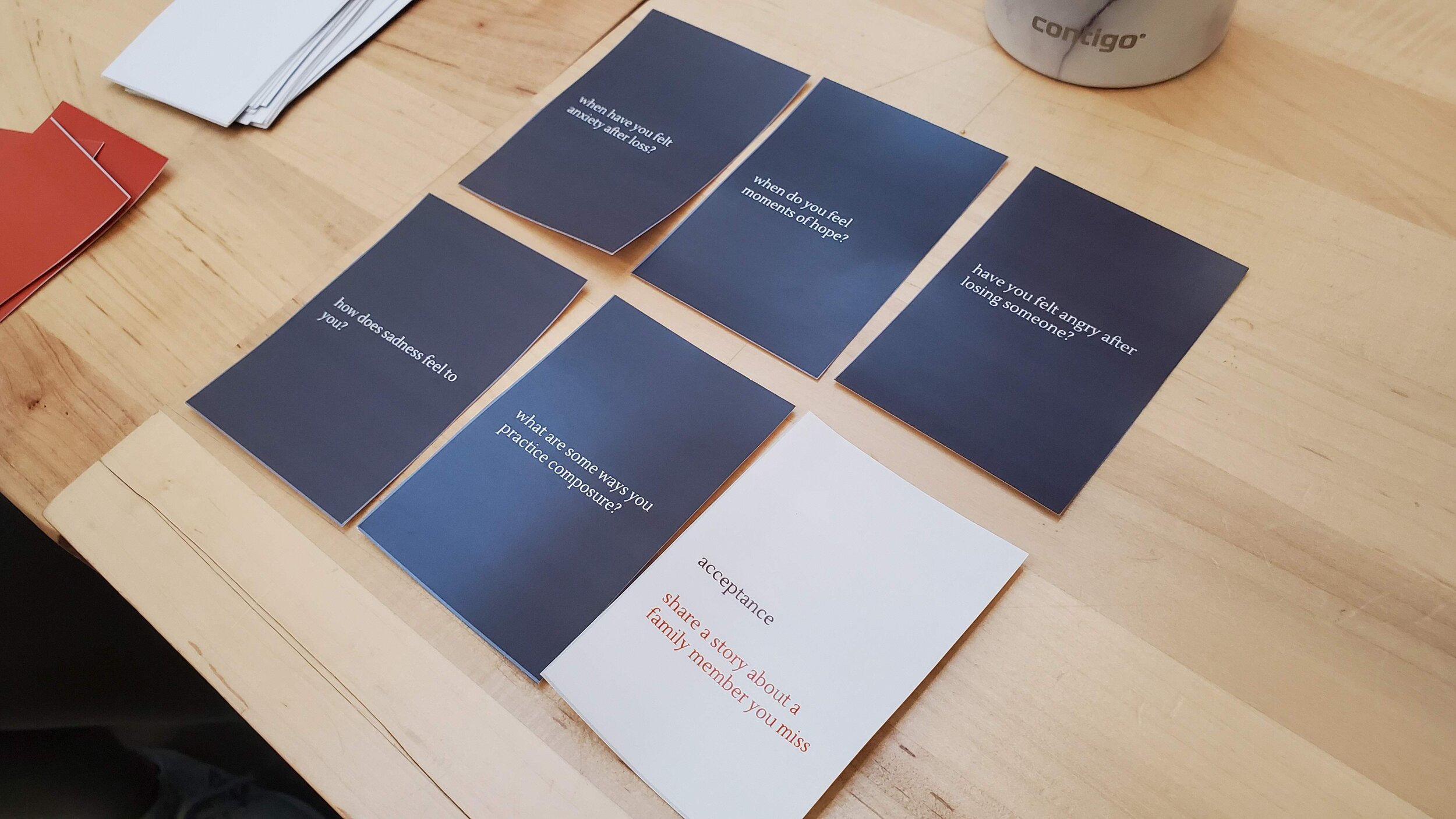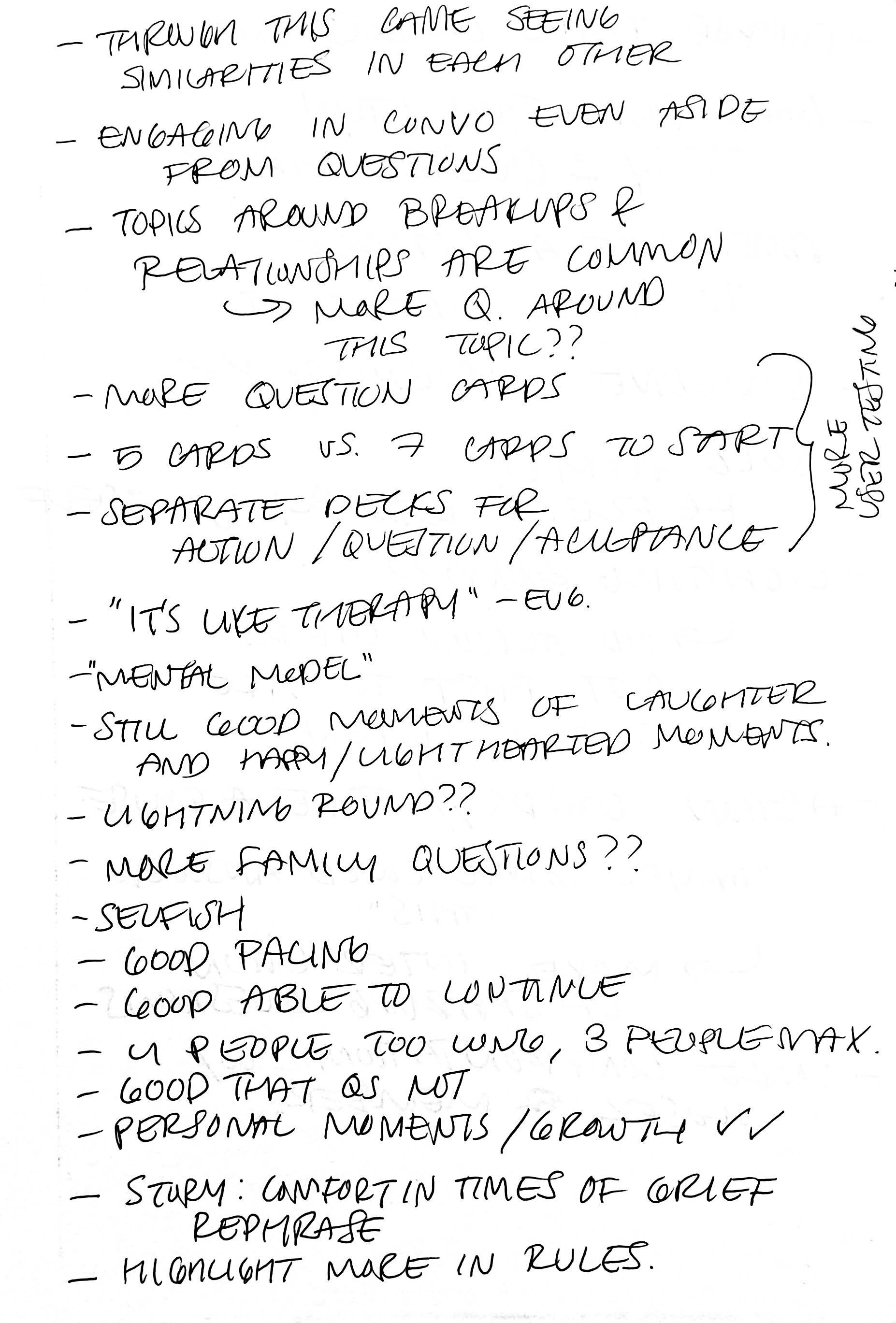Revised Gameplay (2/10-2/14)
This week I planned to have more people test the revised version of the game. I’m looking to see if this simpler gameplay, that is less game-like, will actually be more effective in starting conversations. Additionally, I hope I can create a few more copies to give to people to try out with people in their life. Once I can confirm it’s playable, I’ll pass copies around.
Cards
Rules
Gametesting
Jamie & Eugina
Session: 45 min
Feedback
Overall the playtesting session with Eugina and Jamie was fairly successful and I gained a lot of good feedback to implement into the game. A quick summary of the feedback received is be more explicit and informative in the rules. But with color and formatting highlight important parts of the gameplay. Some interactions of the gameplay need to be more defined in the rules. What they enjoyed from the gameplay was being able to connect on topics that usually they never would have talked about. The pacing of the game was good and there were still good moments to pause and take a break from answering questions. There was a good end to the game and it felt complete. I also gained a few ideas around future user testing around how many cards players should start with, and maybe a version where people can reflect on these questions alone.
Breakdown of feedback
Rules
Be more explicit and detailed
Maybe use color/formatting to highlight certain interactions/goals of the game
Reiterate or emphasize how to win or end the game - make it clear
Add somewhere that players are welcome and encouraged to deviate and engage in conversation outside of the card prompts
Define what happens when and which cards are discarded - maybe diagrams would be helpful
Reorder some wording
What if cards run out? What would happen/how to continue gameplay?
What if there are no more question cards in a hand?
Highlights
Being able to see similarities in each other
Engaging in conversation outside of the prompts
Good pacing
Enjoyed having a good place to end, but also the option to continue gameplay
Moments of personal reflection on growth, maturity, etc.
Good distinction between story and question cards
Felt nice that someone was listening to me
Moments to pause and have a chance to think when using an action card
Quotes
“It’s like therapy”
“We have different mental models behind some of the terms and questions”
“You don’t always get a chance to talk about stuff like this because life gets in the way”
“I feel closer to you now”
Observations
Topics around breakups and relationships came up more often than expected
Moments of laughter and smiling
Future user testing
Try 5 cards vs. 7 cards to start with
Separate action/question/acceptance cards
3 player game, 4 people might be too overwhelming
Reword story card about finding comfort in times of grief
Maybe more diverse types of questions
Solo version where players can reflect by themselves
A version where there are no action cards - continually answering questions
More action cards that allow players to give questions to each other
Rubric Review 1
Problem Statement
Grief is normal but it’s rarely talked about.
Grief and loss can happen to anyone. Processing emotions around loss can be really difficult to articulate and often times it is a topic people don’t enjoy talking about. Conversations around heavier topics can feel uncomfortable but may lead to personal growth.
How might we encourage conversations around grief, loss, and emotions?
Secondary Research // Grief
Grief happens even after losing a friendship or after the end of a relationship. It is most commonly seen through the lens of death, but overall it’s the feeling of loss. And there are different stages of grief, but it’s not linear. It’s a journey where people experience different emotions and feelings at varying times. Grief can truly affect one’s wellbeing and health; it could affect them years after it happens.
Secondary Research // Existing Projects
Looking for existing projects around grief and loss was very difficult because there aren’t that many projects in general. A majority of them encourage individuals to sort through their feelings through a certain medium such as writing or making. A few others also looked at how to preserve legacies, especially through a digital platform.
Primary Research // Interviews // Insights
Preparation: It’s impossible to emotionally prepare yourself for grief or loss, even when you think you can expect it. Processing Emotions: People struggle with processing their emotions, especially with negative ones. Legacy: Preserving legacies through different mediums is a common way to remember people that others have lost. This includes digital legacies, but also through telling stories.
Prototypes
Current Prototype
Thoughts
Game dynamics are naturally competitive, so different iterations I tried implementing varying levels of gameplay. Asking people certain types of questions can feel confrontational. I shifted it so people can choose what questions they answer. People enjoy the storytelling element so I highlighted it more. Rules need to be extremely explicit and clear.
Reflection
This week I got a lot of good feedback and the gameplay worked very smoothly for this game. The game has come really far and I think it’s in a good place where it only needs a couple more play test sessions. Also after working on the rubric review, it gave me a good overview of how far my project has come along which feels good to reflect on.
Next Steps
Next week I am going to reiterate the game and playtest a few more times. I’m going to fully commit more time to the visual style. I’ll possibly make a few moodboards and logo ideas. And if I truly have downtime I want to start sketching wireframes for a website. That way once the visual identity is figured out, I just need to implement it and iterate.


